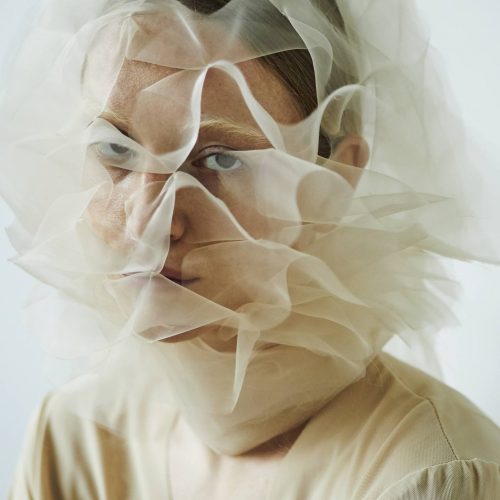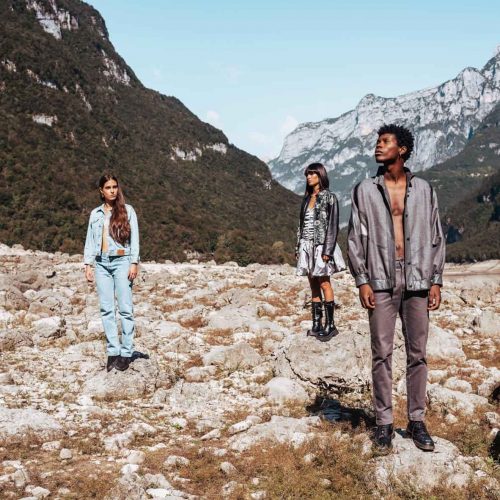How Sustainable is Stella McCartney?
How sustainable is Stella McCartney? One of the first things seen in Stella McCartney's website just before Christmas 2019 was a statement about the brand’s commitment to creating the first vegan Stan Smith's sneakers highlighting the uniqueness of this collaboration between the queen of vegetarian luxury brands and the king of the white sneakers.
Since 2001 when Stella opened her own brand in a joint venture with Gucci Group (now Kering Group), she promoted a cruelty-free and ethical philosophy and stood against the use of leather, fur, skins and feathers in her catwalks and collections. This statement and philosophy followed by an action plan affecting every business decision while differentiating her brand from the rest of the luxury industry that surrounded her. This was a bold step at that time but the brand kept this state of mind and moved forward every year.
The brand adopted an honest and conscious approach sharing the complexity of using faux materials that are non-biodegradable, made from either acrylic, polyester, wool, and mohair. Therefore encouraging their customers to care for their items as long as possible, since luxury does not mean landfill – it means forever.
Using the Environmental profit and loss tool invented by the Kering group Stella McCartney is measuring its business impact since 2012. Every step of the business is measured, from raw materials, the making process and selling in the stores. The tool measures greenhouse gas emissions, water use, water pollution, land use, air pollution and waste across the entire global supply chain and then translated into a monetary value, mapping the hidden costs and benefits from each operation. These insights drive the company's innovation and help make better, more sustainable decisions.
In the past few years, Stella's name and her brand attached to it were connected to almost any sustainable fashion event, conference, innovation, and collaboration in the industry. In many interviews, Stella is aiming to lead the fashion industry to an era where she and her team challenge and push boundaries to make luxurious products in a way that fits for the world today and tomorrow: magnificent and sustainable, without any compromises.

© Stella McCartney Resort 2020
The brand main focus is to invest a lot in pushing towards circularity, innovative materials and cutting-edge technologies that decrease the brand's environmental impact
Vegetarian leather: Since 2013, the brand is using alter-nappa for shoes and bags. This material is made from polyester and polyurethane with recycled polyester backing. The coating is made with over 50% vegetable oil, a renewable, natural resource. By switching the polyurethanes to water-borne and solvent-free polyurethanes it's safer for people to work with and has low energy and water intensity. At the same time, they have been exploring lab-grown leather as a more progressive approach to materials.
Cashmere: even though virgin cashmere represented just 0.1% of all the materials the company used, it accounted for 42% of the total environmental impact at the raw material stage – roughly 100 times that of wool. As a result of this measurement the company stopped using virgin cashmere and uses Re.Verso™, recycled cashmere made from post-factory cashmere waste in Italy. By 2016 they were able to reduce it's impact to 11% despite using larger quantities of cashmere. The usage of this innovative material demonstrates their commitment to circular fashion and becoming restorative and regenerative.
Viscose: Another key material that starts as a tree, this is why an action plan making sure that the sourcing forests are protected and enriched was in need. Every year, 150 million trees are cut down to create this fabric. As of Spring 2017 collection, all of the ready-to-wear viscose comes from sustainably managed and certified forests in Sweden. The topic of deforestation is important to Stella McCartney's sustainable statement because it is one of the key drivers of climate change, and the cause of habitat loss for millions of species once the forests are damaged. These species would not survive once they have lost their homes.
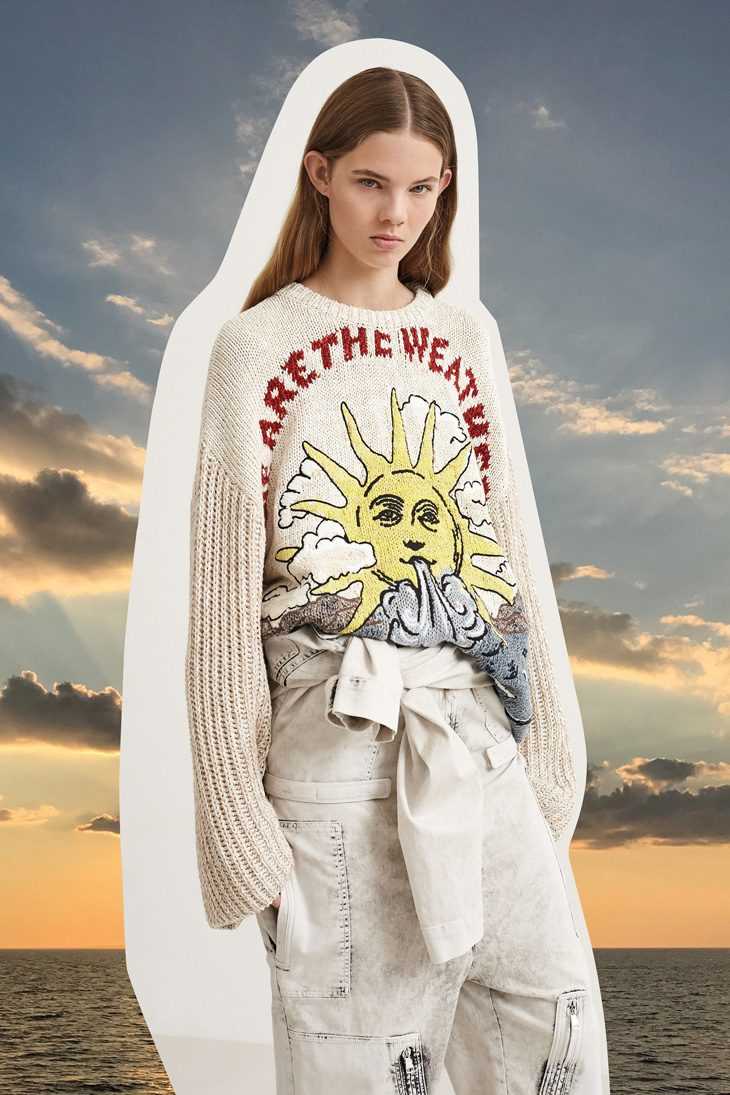
© Stella McCartney Resort 2020

© Stella McCartney Resort 2020
Today the brand's viscose supply chain is fully traceable, transparent and entirely European, between Sweden, Germany, and Italy. The whole path of the company’s viscose is circular- eliminating chemicals, incorporating energy efficiency and pushing regulations. The company established a partnership with Canopy to push conservation solutions and protect the world’s ancient and endangered forests. The next step for them would be developing only recycled cellulose fibers.
Metals: Each year the brand uses between 10-15% metals out of all the materials used. Most of the metals used to go into the Falabella bag chains, made from brass. Although they use a small amount of metal in their overall material usage, it has one of the highest impacts. In 2016 measurements 13% of the total environmental impact was a result of the use of metals, and the toxic process of mining copper. Copper does not break down in the environment so high levels of it found in the ground and water sources surrounding mines. The brand offer also chains made from the development of stainless steel and aluminum, with lower environmental footprint and more sustainable coating processes. The brand communicates that the products are built to last, and seeing brass as a precious material makes the free repair services that are offered as an inevitable step.
Organic Cotton: allows creating products in a way that enriches the environment and improves farmers’ conditions. This agriculture system eliminates the use of toxic and persistent chemicals, improves soil health and increases water conservation. This explains why the brand has been increasing the amount of certified organic cotton used in their collections over the years, so today 61% of the cotton is certified organic. The brand pushes this a step further, working on gaining farm-level traceability for the cotton since 94% of the cotton the brand use is traced back to the country of origin
Recycled Nylon and polyester: The brand's goal is to stop using virgin nylon this year, by switching to ECONYL® regenerated nylon. ECONYL® turns waste into a resource. Industrial plastic, waste fabric and fishing nets from oceans all are recycled and regenerated into a new nylon yarn that is exactly the same quality as virgin nylon.
The majority of recycled polyester around the world made out of recycled plastic water bottles. The Stella McCartney team are seeking and supporting new technologies that will enable them to recycle polyester fabrics back into fabrics, since only 1% of textiles are currently recycled back into textiles. The team believes it's time for the fashion industry to deal with its own waste. Although the brand use since 2012 for their bags lining fabric made from recycled polyester instead of virgin one just by 2025 the brand aim to only use recycled polyester. This is five years later than recycled nylon simply because the technology to reach this aim is not yet available in a sustainable and circular way.
In 2017, the brand partnered with Parley for the Oceans to raise awareness for ocean conservation and fight marine plastic pollution. As part of their mission to combat marine plastics, two new products were created made from Parley Ocean Plastic™: the Adidas by Stella McCartney Ultra BOOST X sneakers and the ‘Ocean Legend’ Falabella GO backpack.
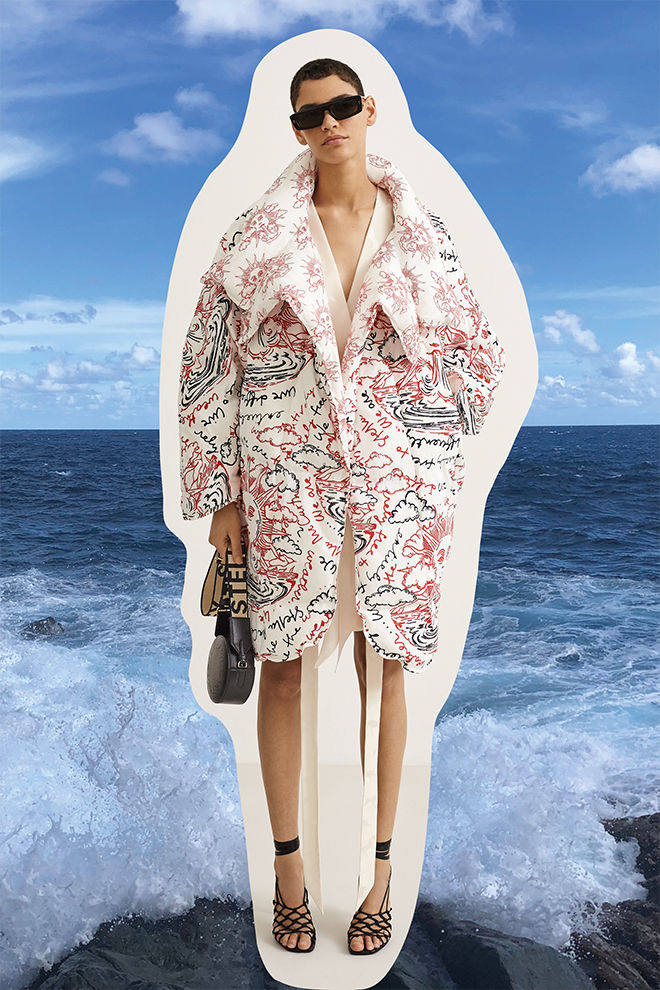

Silk: Over the years the company used a mix of traditional silk and Peace Silk. Peace Silk is essentially made the same way as commercial silk, but in this case, the silkworms are able to emerge naturally from their cocoons. Although Peace Silk causes no harm to silkworms, many issues popped up with using it over the years. It was difficult to source the quality and quantity of Peace Silk needed to produce the brand's products.
In 2018, the brand co-sponsored an exciting prize with PETA- the Biodesign Challenge- the first-ever Animal-Free Wool. encouraging participants worldwide to develop biofabricated vegan wool. The best results were showcased in the MOMA in New York City. The winners from Bogota, Colombia created Woocoa vegan wool made from hemp and coconut fibers treated with enzymes extracted from the oyster mushroom.
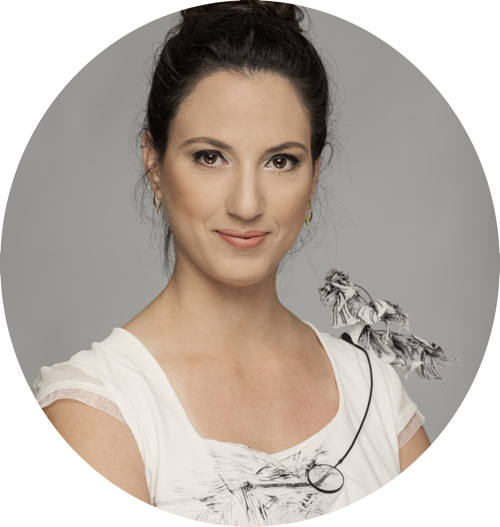
+ Words: Danielle Keller Aviram
Danielle Keller Aviram is a sustainable jewelry and fashion researcher, consultant and designer. She graduated an M.A focusing on sustainability in fashion at AMD Berlin after doing her B.A in jewelry and accessories design in "Shenkar" Tel Aviv. After her B.A she had her own international fine jewelry brand operating for 5 years.

